Best Camping Gear for Beginners: Essential Starter Kit (18 Pieces)
Planning your first camping trip? Here’s the best camping gear for beginners. We include tents, stoves, coolers, chairs, and lots more to make your camping trip a success. This camping starter kit covers the essentials for your trip.
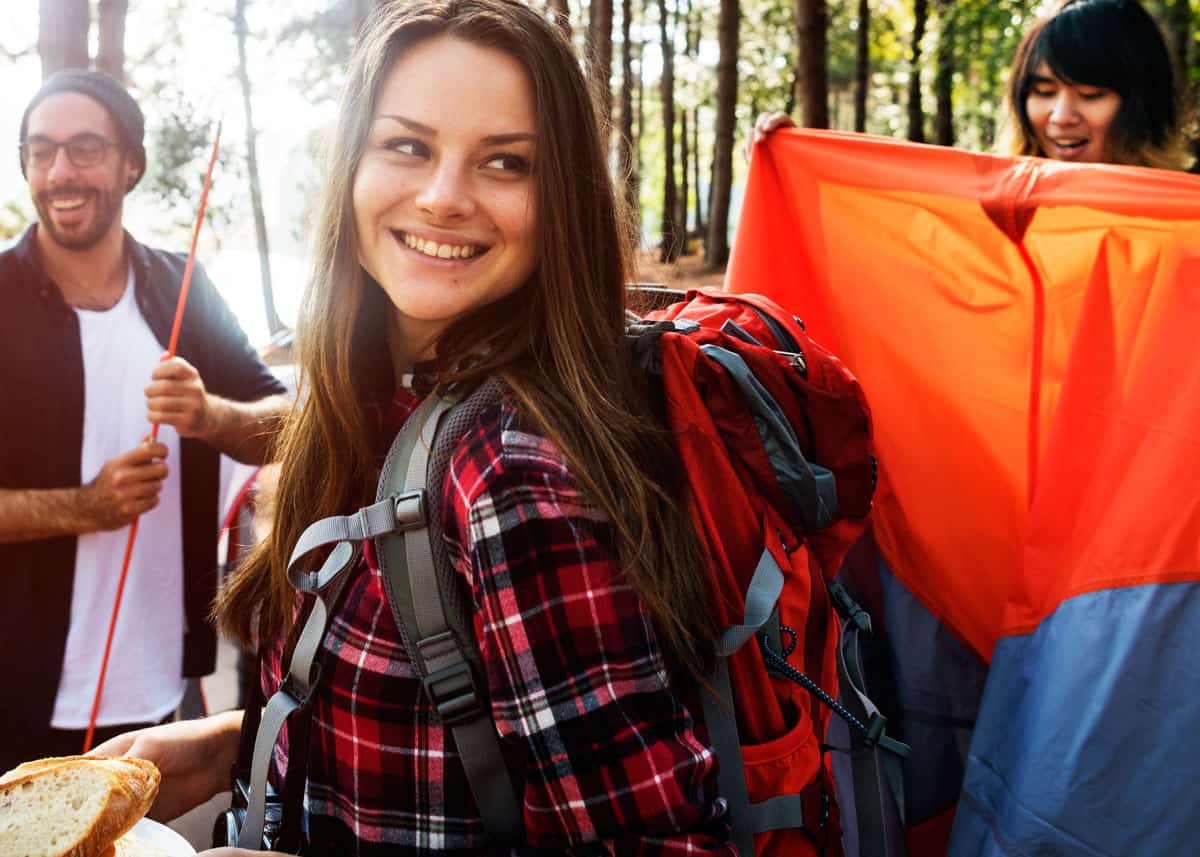
Heading out into the great outdoors? Perfect. Before you go, make sure you have the basics.
Guide to the Best Camping Gear for Beginners
When you’re new to camping, and setting out on a grand adventure, whether for the first time or you have a couple of trips under your belt, it’s hard not to get carried away on a shopping spree when compiling a list of ‘things I need”. I know, trust me!
To help you out we have compiled a list of essentials you need (and sometimes more than one). Back-ups of certain items, like a flashlight, can be absolute lifesavers.
Type of Camping Gear: Weight Considerations
The type of camper you are will determine the style of gear you need.
- For example, if you are a hiker then all of your gear will want to be lightweight and compact because you have to carry everything yourself so lighter is better.
- If you are camping from your car then you are lucky enough not to have to worry about weight. Unless of course, you are the unlucky one lugging it all to the campsite which may not be as close as it looked when you arrived.
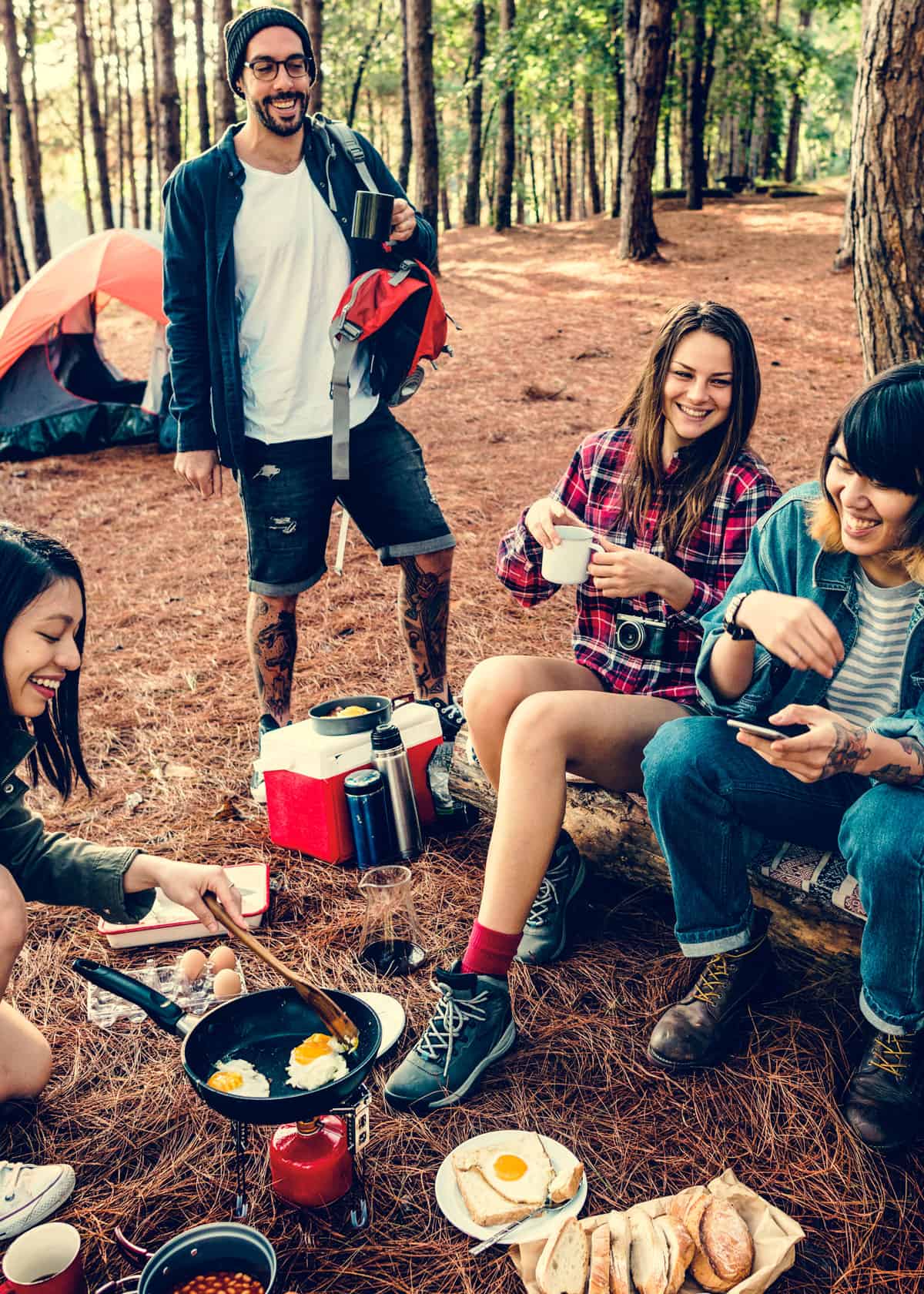
Planning a campfire? Check out 6 Ways to Start a Campfire
Camping Start Kits for Beginners: 18 Items
Here we will cover the essentials. Handy tips and tricks to help you on your way, questions you need to answer to ensure the product meets your needs, and the qualities you need to consider when purchasing your camping gear.
All of the basic questions to get you started and on your way to enjoying the great outdoors as soon as possible.
1. Tents and Accessories
Firstly, and most importantly, you are going to need a tent. Not just any tent, one that checks all the boxes for your needs, climate, and taste.
Like always having some extra tent pegs of varying lengths to secure your tent. Different surfaces need different pegs. For example – you will need longer pegs for sandy areas like a lake shore or camping on the beach.
5 Considerations when purchasing your tent: number of people, weight (lightweight for hiking), size when stowed in its carry bag, season and location of use, ease of setup, and the ability to withstand weather changes.
Recommended tent: AmazonBasics 4-Person Tent This is a 3-season / 4-person tent. Check current price.
More reading: How to fold a tent like a boss (dome and cabin)
Fly Sheet/Tarp: If your tent does not come with a fly sheet already, then you’ll need one. Nobody wants to wake up to the steady drip drip of raindrops on their forehead in the middle of the night.
2. First Aid Kit
This is an essential piece of camping equipment to cover every situation from a scratch to an invading army of creepy crawlies that may find their way into boots, tents and outdoor gear.
A first aid kit can be the difference between enjoying (surviving) in the wild or not. It is also a good idea to brush up on your first aid knowledge and or training.
4 Things to consider when purchasing: size, contents, fauna you are likely to encounter (spider or snake bite), and your knowledge on how to treat yourself and others if something does go wrong. Remember when camping you could be a long way from your car when injured.
PrepBay Tactical First Aid Kit is lightweight, durable, and compact making it ideal for all forms of camping. Set out in easy-to-follow sections enables you quick access at a glance in times of trouble. It also makes it easy to know what you need to replace. Check current price.
3. Stoves and Cooking Gear
Toasting marshmallows around the campfire making s’mores is the perfect camping tradition, but a lot of people prefer not to live on s’mores alone.
Choosing the right stove can be the difference between a great camping trip and a trip home in icy silence surrounded by starving loved ones. And you know you’re going to want your morning coffee.
Compact cooking stoves and equipment make it easy to feed friends and family when camping. There are tiny lightweight, incredibly compact personal cooking systems preferred by hikers who have to carry their own gear, like a Jetboil which packs neatly in your backpack or saddle bag. Check the current price on Amazon or REI.
Coleman’s hugely popular classic propane stove is durable, easily disassembled for cleaning and fuel efficient. With adjustable wind block panels allowing you to cook with larger pans and twin adjustable burners it covers all your needs in one compact package. Check the current price.
Cooking Gear: Light, compact cookware ensembles make your camping experience more pleasant. Non-stick ensures easy cleaning and easily stackable means they are easy to keep out of the way reducing campsite clutter. These two factors help deter wildlife from wandering into your campsite excited by the smell of food.
4. Torches, Lanterns, and Headlamps
I can’t state enough the importance of adequate lighting when camping.
This can come in the form of lanterns, flashlights, or headlamps.
Lanterns: Providing a large amount of light, lanterns can be hung from trees, tents, or any overhead object to light your entire outdoor area.
It’s a good idea to have a spare in case one is misplaced, smashed from falling, or has a mechanical issue becoming very dim. Check the current price.
Flashlights / Torches: An essential for telling stories around the campfire, flashlights are one of the first things campers think to pack. Powerful beams to light your way when walking in the darkness around your camping area they can also be a first aid tool.
If on the remote chance something goes wrong and you need help, they are a beacon for rescuers and search parties to zone in on your location or used to signal for help. Because of this, an adjustable beam is recommended. Check the current price.
Headlamps: A great little light source leaving your hands free while illuminating exactly where you are looking. Comfortably set on your forehead it’s easy to forget they are there so just make sure you don’t bump them on anything, especially if in close quarters like caves or thick brush. Check current prices on Amazon or Pelican.
*Headlamp tip – angle the light slightly downward so you do not blind people when you are talking to them or looking at them. They really appreciate it and this helps keep a peaceful campsite.
5. Coolers
Coolers, Esky’s, Chilly Bins, no matter what you call them, they are the lifeblood of camping the world over. Keeping your food fresh and safe from critters is crucial.
Because yes, we love bears but do you really want to look one in the eye as you emerge from your tent in the morning?! Food storage is key to a successful camping trip. Here’s how to keep bears away while camping.
Choosing your cooler depends on several things. Number of people, duration of your trip, weight – if you need to carry it to the campsite or it can sit nestled in the back of your car, just to name a few. So, how do you choose?
How to choose the right cooler for you:
- Material: stainless steel through to a virtually indestructible Rotomoulded plastic construction, the material impacts the lifespan, durability, temperature control via insulation material, and weight of your cooler.
- Drainage: coolers these days can have an ice retention of up to four days depending on how much they are opened and closed so easy drainage is key to keeping your food fresh. Choosing an esky with a drainage system allows you to drain excess water as the ice melts without having to remove all the food to tip it out.
- Construction: hardy handles, latches and lids means easy transport and great food freshness with good seals. A handle breaking halfway to the campsite and watching all your food go tumbling across the ground is very undesirable – so good construction is key.
- Cost: the old adage ‘get what you pay for’ definitely applies to coolers. Having said that you don’t need to go out and spend a million dollars, there are great coolers within every budget.
Yeti coolers are among the top-rated of all coolers and are available in every size you could need.
Bear-proof, sturdy enough to stand on and with excellent construction, drainage and additional extras like anchor point tie down slots to fasten to your truck or boat, it’s got it all. Check the current price on Amazon or Dick’s Sporting Goods.
More reading: How Long Does Ice Last in a Cooler? 4 Types Compared
6. Sleeping Gear
Making the right choice with your sleeping gear makes the difference between a comfortable night’s sleep and a shivery one.
Just like Goldilocks, you don’t want one that makes you too hot or too cold, you want one that keeps you just right and snugly so you enjoy your time in nature!
Alpine or Equatorial, waterproof or lightweight? These are the factors to consider for the type of camping you will be enjoying.
5 Things to consider when purchasing: size, material, waterproof, design, and weight. Specialty lightweight options are available for hikers or you can opt for a 4 Seasons type that covers most general climates.
If you are headed into the snow and below-freezing temperatures then a specialty sleeping bag will be needed. Check the current price.
Handy Hint #4: Take a minute to clear away rocks, pine cones, branches etc. before erecting your tent. There’s nothing worse than rolling over in the middle of the night and trying to sleep on a rock!
Mattress: For hikers, this may not be an option but for normal straight-out-of-car camping, investing in a thin air or foam mattress can make the difference between tossing and turning all night or sleeping like a baby out in the wilds.
Investing in a thin sleeping pad can make the difference between tossing and turning all night or sleeping like a baby out in the wilds.
REDCAMP Self Inflating Sleeping Pad with foam interior takes all the bumps out of an uneven surface, adding warmth and comfort to your camping experience. Check the current price.
You might also consider a tent heater to take the edge off of those cold nights.
7. Outside Gear
Chairs are one of the most forgotten items by those new to camping. So many people get excited and think – tent, sleeping bag, cooler, check, check, and check … let’s goooo!
Then after they’ve set up and go to sit down, all of a sudden, the blame game starts with ‘who forgot the chairs?’
Pockets to put your book, sunscreen or whatever you have on you, giant cup holders for drinks, and there are even some designed to hold a wine glass.
Core Equipment: Padded Hard Arm Chair well and truly deserves its top-ranking status with added support, a sturdy durable frame, additional storage pockets, and an oversized cup holder.
Easy to set up, pack up and stow in its own travel bag, many an afternoon can be enjoyed in comfort. Check the current price.
Hammocks: Not an essential but well worth a mention, hammocks are so popular I have seen hikers take them instead of a tent!
One of the best outside accessories to include in your camping equipment, they can also double up as a place to sleep and a makeshift storage area to get things off the ground after rain.
More reading: Ultimate Guide to Camping with a Hammock [Beginners]
8. Survival Gear: Axes, Tomahawks and Knives
An ax or a tomahawk are fantastic tools to include in your camping gear. Some parks include firewood for campers to reduce the risk of infestation of invasive bug species so having something to cut the wood into kindling to start your campfire is a good idea.
Chopping wood, splitting wood, cutting rope or whittling, depending on the task you need done will help you choose the most appropriate tool and size needed. After all, it’s hard to chop wood with a pocket knife.
An ax with sheath is a handy camping tool Choose one that is compact and strong enough to accomplish basic tasks. Smaller than an ax for ease of handling, a hatchet is a great, lightweight alternative.
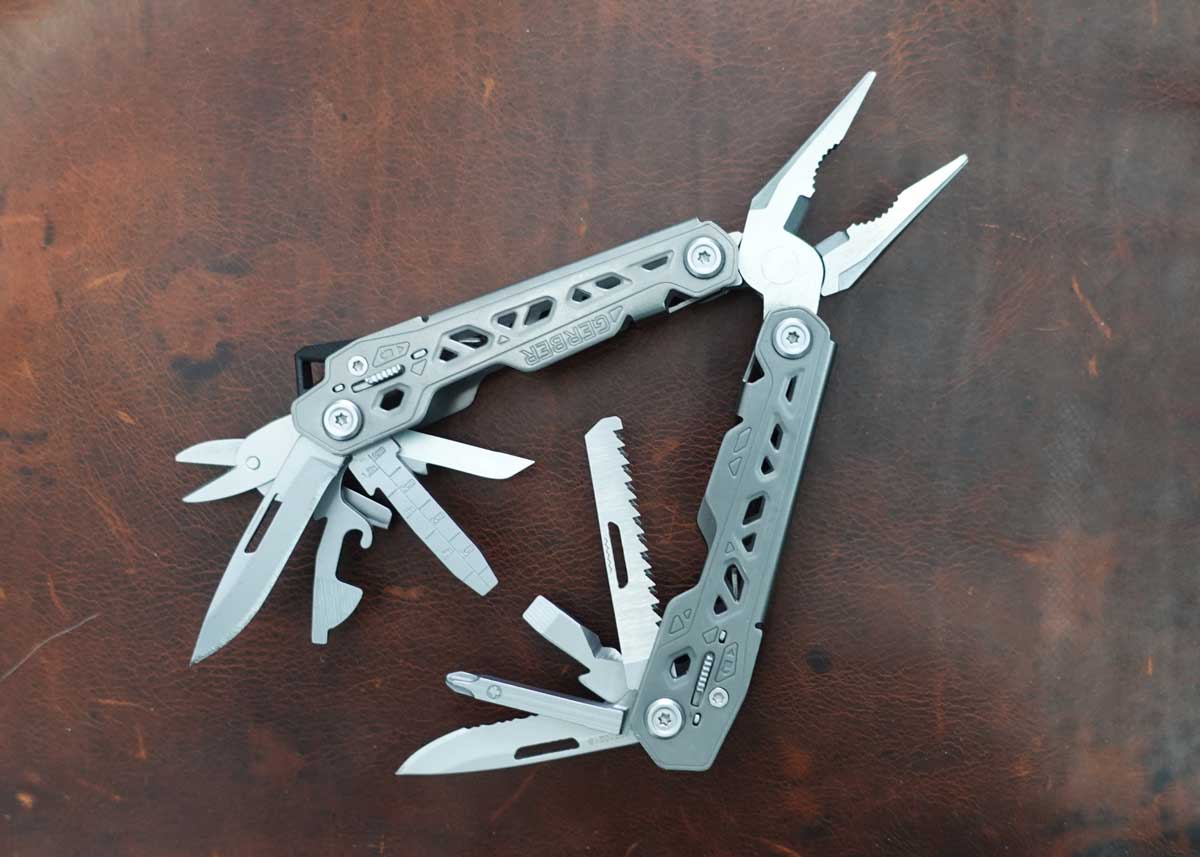
Multi Tools: Rather than bring a small toolbox, you can probably get away with a multitool, like this one by Gerber.
The Gerber Truss is my favorite multitool. I’ve had it for many years and we take it hiking and when we’re filming. It’s equally good at opening cans as tightening camera mounts. Check the current price on Amazon or REI.
Knives: A vital tool to include in your camping gear, it’s best to have more than one knife. The humble knife is your best friend in the great outdoors and can be used for basically anything around the campsite.
From helping with cooking dinner to making a clothesline to dry everything after an unexpected bout of rain. A little buddy to put in your pocket and take with you everywhere.
Grand Way’s Spring Assisted Folding Pocket Knife is a hardy, rust-resistant knife. Reliable with a locking mechanism, the durable steel blade can hold its edge without sharpening for a long time, and comfortable grip. Check the current price.
Handy Hint #5: It is always a good idea to have a backup knife in your gear. It’s one of the most used and useful tools you have and need.
9. Dry Bags
A dry bag is a waterproof bag. The tops usually roll down so you store a surprising amount of gear in them by just unrolling and adding more.
Perfect for hiking, rafting, fishing, or boating they are a great addition to your camping gear, especially to store your electronics just in case of rain. Or crossing a river, or going fishing … well you get the idea.
Anything that cannot get wet or is essential for safety like radios, first aid kits, and any electronic devices are best stored in a dry bag just to be safe. Check the current price.
10. Rope
With endless possibilities and uses, a coil of rope or cord is needed more than you might think.
For makeshift clotheslines to hang your towels on after a swim or to tie something up so critters don’t get at it in the middle of the night, whatever you may come across or need, a spare length of rope is one of those indispensable things every camper uses.
Handy Hint # 6: Temporary clotheslines strung between two trees are best made with brightly colored cord. This will reduce the likelihood of you accidentally walking into it and injuring yourself.
11. Accessories and Essentials
Preparation is key when in a remote area and unable to just ‘run to the store’ to buy another one of whatever you just ran out of.
Spare batteries, extra cooking fuel, a flashlight, a spare knife, rope/cord, extra dry bag, a tarp, additional bug spray, waterproof matches/lighter, map, whistle, and sunscreen. While you can open a can without a can opener – it’s just simpler to bring one along.
Stowing a few basics in a backup tub or bag will help in emergencies, cut down on frustration and ensure your family or group has a great trip for the entire length of your stay without having to come home early.
If you are going somewhere other than a campground, you should bring some survival gear with you. Here is some must-have survival gear to consider.
Helpful Tip – write a camping list to ensure you don’t suffer those ‘I can’t believe I forgot to pack…’ moments. It’s uncomfortable when you forget a pillow, towel or cooking utensils. (And don’t get me started on the toilet paper!)
Think You’re Ready To Go?
Taking a moment to think about the camping gear you are purchasing is the biggest investment you can make for yourself and your family.
Considering the terrain, climate, and activities that will be filling your days and choosing the right gear, camping will return the favor by providing joyful memories that last a lifetime.
And there you have it – the best camping gear for beginners!
Your Turn
What is your must-have camping gear? Let me know in the comments!














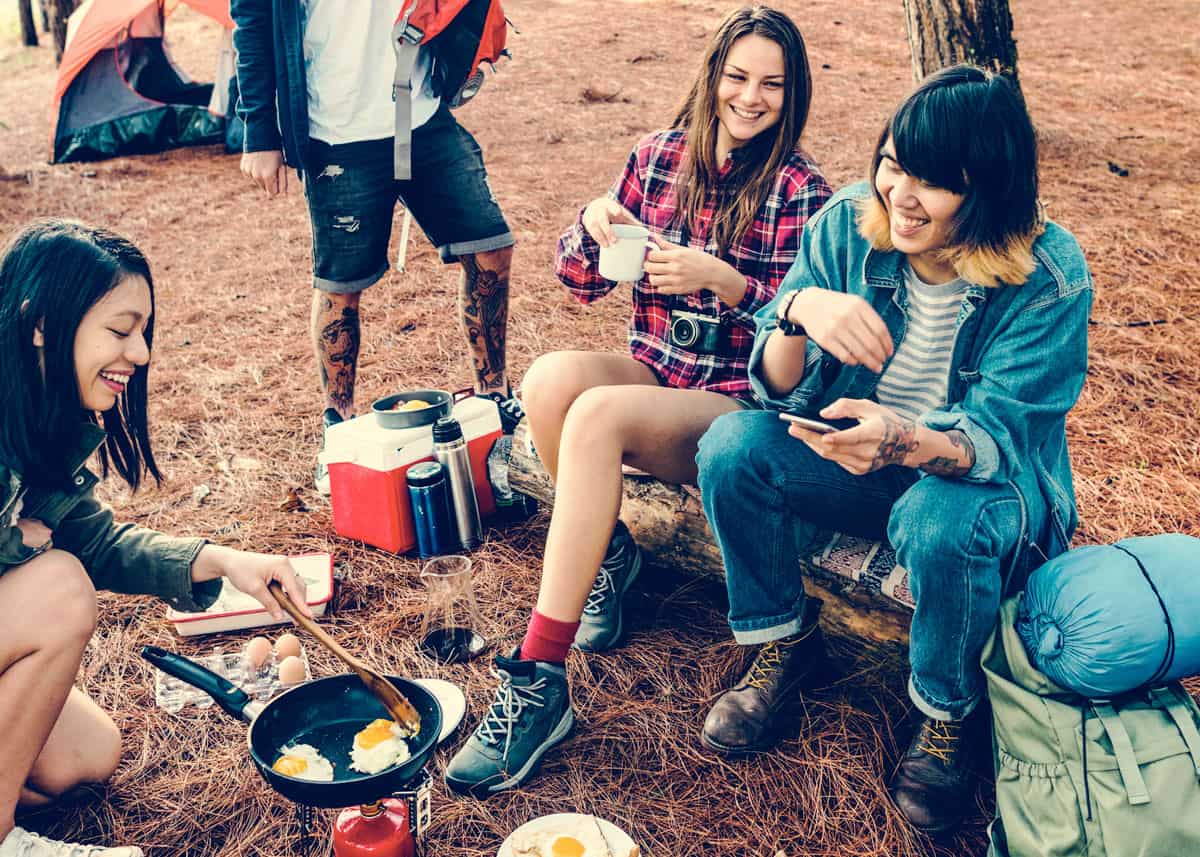

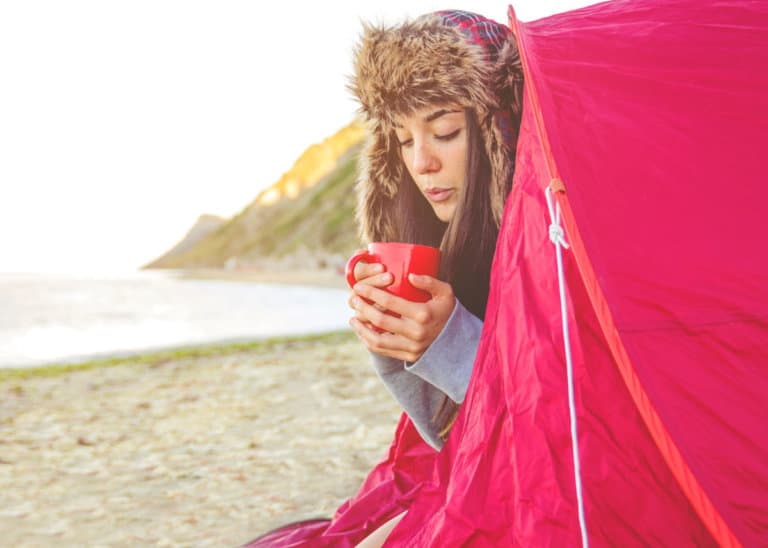
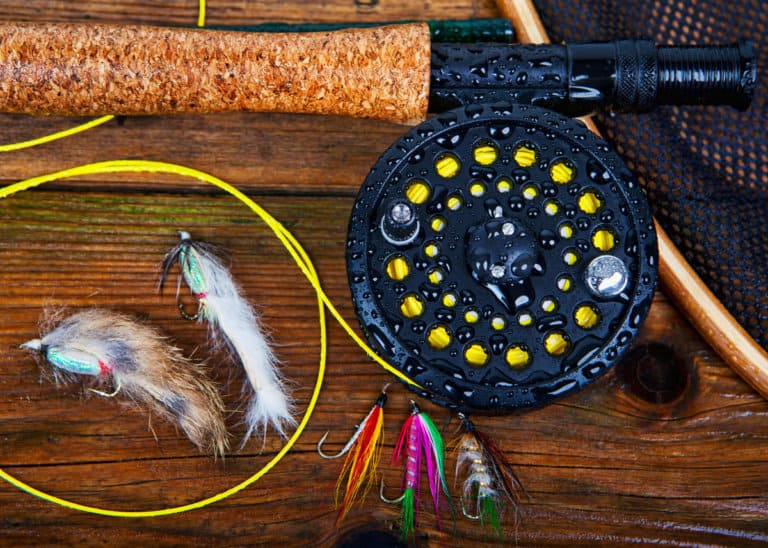

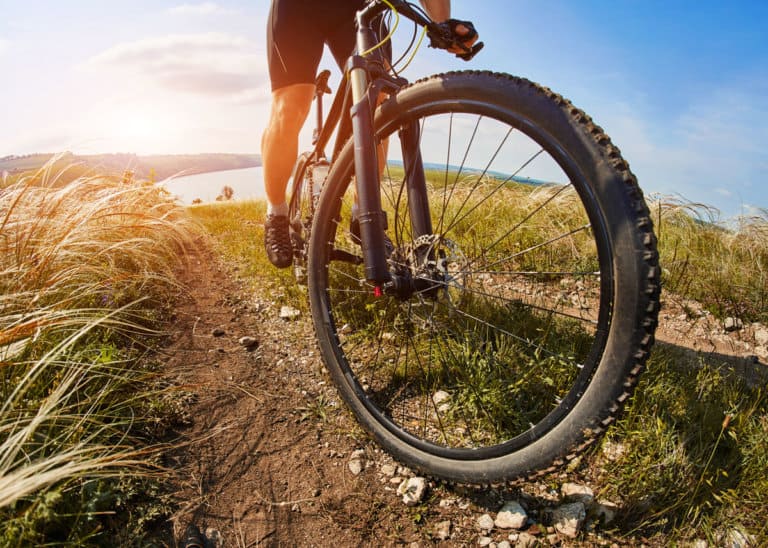
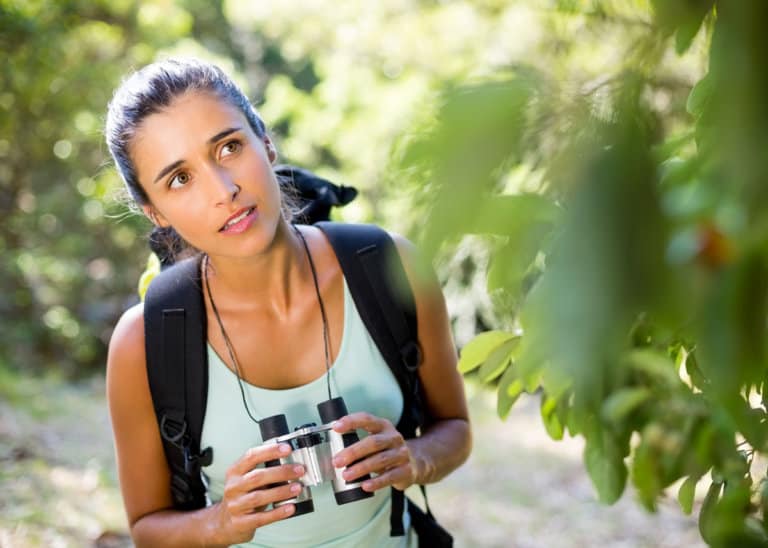
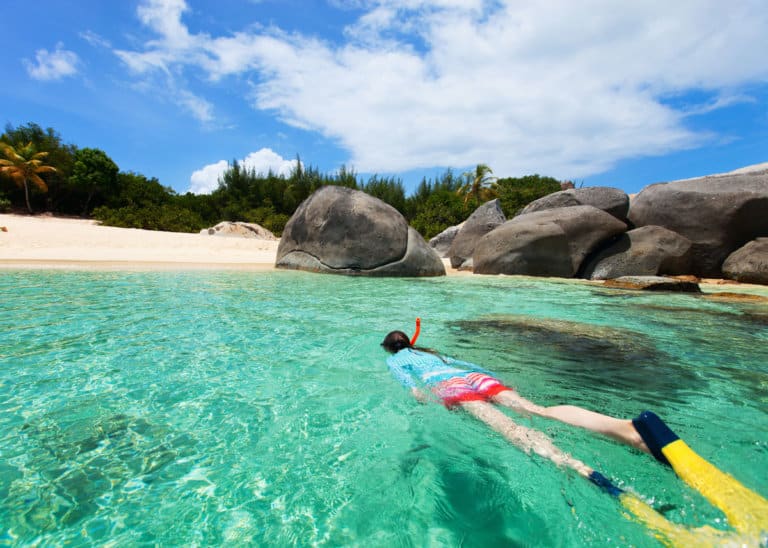
I am glad that you mentioned the weight of the tent should be considered before you buy it. My dad and I are planning a few hikes before the winter sets in, and we don’t want to carry any more weight than we have to. I’ll have to find and purchase a lightweight tent.